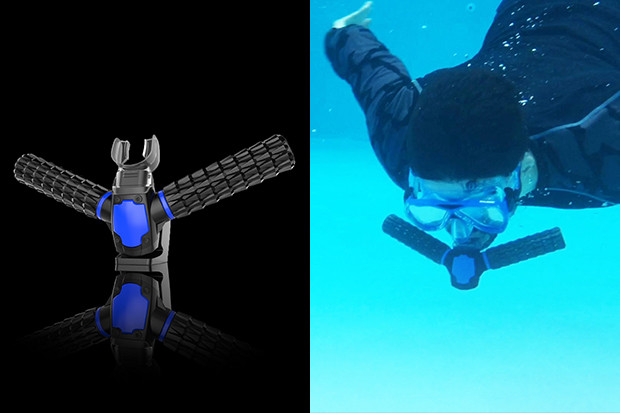An underwater breathing device, widely criticized by experts in both the scientific and technical communities, has just surpassed the $830,000 benchmark in contributions made via crowdsourcing site Indiegogo.

Referred to as “Triton”, the mouth-based device is marketed as having artificial gills capable of providing its user with enough oxygen for up to 45 minutes of underwater swim time, at a maximum dive depth of 15 feet. It is able to accomplish this by way of a microporous filter that has tiny holes in it, which are small enough to stop water from getting in, but large enough to allow for the dissolved, “free-floating” oxygen to enter.
The oxygen is next compressed and transferred over to an on-board storage tank, a process powered by a supercharged lithium-ion battery.

Now for the reality: this device, and all of its claims, is impossible for several reasons. For one, it’s small — Triton measures just 11.5 inches in length. If it’s capable of filtering out oxygen from the water — enough for a diver to not drown — it would have to be filtering approximately 24 gallons of water every minute. What’s more, it would need to be operating at 100% efficiency to avoid any risk of accidental choking and / or shortness of breath.
Additionally, this much water coming through the filter system is equivalent to, more or less, six garden hoses’ worth of pressure. To sustain this constant level of flow, the swimmer would have to be moving through the water at exceptionally fast speeds.
So, that’s just the filtering process. In terms of the actual technology, being able to compress oxygen requires a lot of energy. Andrew David Thaler, a deep-sea ecologist, spoke to Business Insider about it and explained that a battery capable of supporting this type of system would need to be so powerful, it isn’t actually available on the market yet.
Also, breathing in pure, pressurized oxygen is hazardous to one’s health — too much of it can cause severe damage to the user’s respiratory and central nervous systems.
There has been a theory floated out there that perhaps the device is actually electrolyzing the water to produce usable oxygen. This technology already exists, so it’s plausible — but only as a theory. You see, to support a system that electrolyzes that much water to produce enough oxygen to support a diver underwater for 45 minutes would require a ton of electrical energy — about a nuclear reactor’s worth (or so).
All of this is nothing new to the Triton crew — they’ve been hearing these criticisms for the last two years since the technology was first introduced. None of it has deterred them, though, as they went ahead and built a prototype and quickly put it on Indiegogo to see if they could win the public’s support.
And you know what? They got it, having already reached the team’s funding goal of $50,000, and in fact, already surpassing the $830,000 mark at the time this article’s being written.
That’s 2,200+ people who’ve gotten behind this idea, all scientific and technical evidence aside.
To check out the campaign for yourself, head to the Triton page.
Via iflscience.com
Advertisement
Learn more about Electronic Products Magazine





